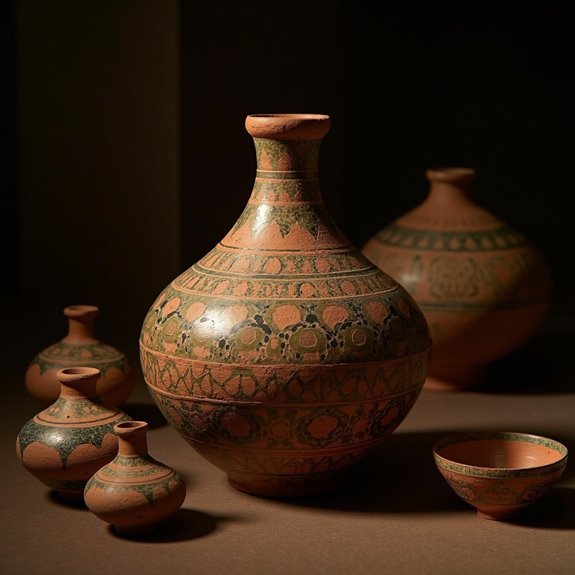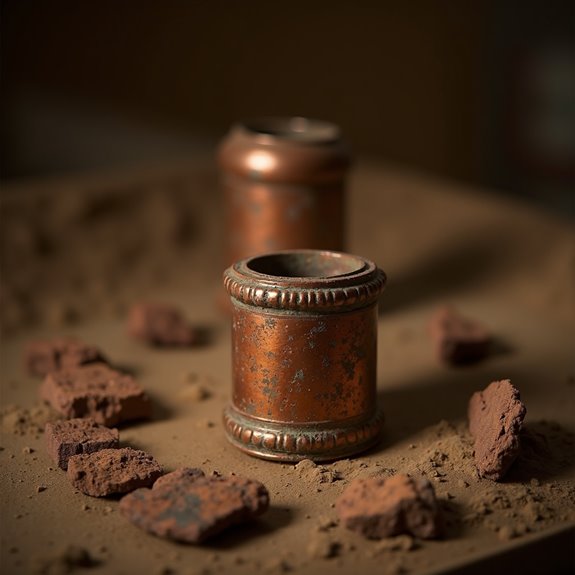The Baghdad Battery: Evidence of Ancient Electricity?
The Baghdad Battery has puzzled historians and scientists since its discovery in the 1930s. This ancient artifact, comprised of a clay jar, copper cylinder, and iron rod, suggests the intriguing possibility of early electricity generation. Some experts argue it might have been used for electroplating or other advanced applications. Yet, questions linger about the true capabilities of ancient cultures. What might its actual purpose have been, and what implications does it hold for our understanding of technological history?
Introduction

The Baghdad Battery, often regarded as one of history’s earliest examples of electrochemical technology, sparks intrigue among historians and scientists alike. Discovered in the 1930s near Baghdad, Iraq, this ancient artifact consists of a clay jar, a copper cylinder, and an iron rod. Some researchers speculate it might have been used for electroplating or therapeutic purposes. Various studies propose that the device could produce a small voltage, igniting debates about the technological capabilities of ancient civilizations. While mainstream scholars remain skeptical about its function, the Baghdad Battery continues to challenge our understanding of ancient innovation. This enigmatic object invites further exploration, signifying both the potential and mystery surrounding the application of electricity in the distant past.
Sassanian Pottery From Persia

Sassanian pottery from Persia, which flourished between the 3rd and 7th centuries CE, showcases remarkable craftsmanship and artistry. Skilled artisans created exquisite pieces using a variety of techniques, including intricate glazing and detailed relief work. The pottery often featured bold colors and dynamic patterns, reflecting the cultural and artistic influences of the time. Many pieces served utilitarian purposes, while others were specifically designed for ceremonial or decorative use. Sassanian pottery not only highlights the sophistication of ancient Persian society but also its trade connections, as pottery styles influenced regions far beyond Persia’s borders. Scholars study these artifacts to gain insight into daily life, social structures, and artistic trends during this pivotal period in history. This pottery remains a reflection of Persia’s rich cultural heritage.
Notable Cases or Sightings

Throughout history, there have been remarkable accounts of the Baghdad Battery, a series of ancient artifacts that some believe to be an early form of galvanic cell. Among the notable sightings, a group of archaeologists unearthed these artifacts in the 1930s near Baghdad, drawing significant attention. In the 1940s, historian Wilhelm Konig famously proposed that these jars could generate electricity. His assertions sparked widespread debate among scholars. In the 1970s, Joseph Needham referred to the battery in his work on the history of science in China, further amplifying its mystique. More recently, enthusiasts have recreated the Baghdad Battery using similar materials, demonstrating potential applications of electrolysis. Each encounter deepens the mystery surrounding these ancient objects and their possible uses beyond mere decoration.
Common Theories or Explanations
While some scholars argue that the Baghdad Battery served as a simple storage vessel, others propose more intriguing theories regarding its true purpose. Some researchers suggest it functioned as an ancient galvanic cell, capable of producing electricity for electroplating or healing practices. They point to the presence of iron and other conductive materials within the device, supporting the hypothesis of electrical generation. Meanwhile, skeptics argue that the battery lacks concrete evidence pointing to its use as a power source. Others emphasize its practical uses for storage or religious artifacts rather than its alleged electrical capabilities. Ultimately, the diverse interpretations highlight the ongoing mystery surrounding the Baghdad Battery and its potential significance in ancient technology.
Frequently Asked Questions
What Materials Were Used in Constructing the Baghdad Battery?
Experts believe the Baghdad battery’s construction involved a clay jar, a copper cylinder, and an iron rod. These materials combined could potentially generate a small electric charge, intriguing researchers about ancient engineering techniques.
How Did Researchers Determine the Battery’s Age?
Researchers determined the battery’s age by analyzing its composition, utilizing radiocarbon dating methods on associated organic materials, and examining nearby artifacts. These techniques provided insight into its historical context and temporal placement within ancient civilizations.
Were Similar Batteries Found in Other Ancient Cultures?
Researchers discovered similar artifacts in other ancient cultures, like Egypt and Rome, suggesting they may have utilized electrochemical principles. However, the purpose and functionality of these artifacts remain debated among historians and archaeologists.
What Practical Uses Might the Battery Have Served?
The battery might’ve served practical uses like electroplating, medical treatments, or even ceremonial purposes. Its design suggests it could’ve generated low-voltage currents for various ancient tasks, showcasing ingenuity in technology for that era.
How Did Ancient Electricity Differ From Modern Electricity?
Ancient electricity primarily relied on simple electrochemical reactions, while modern electricity uses advanced technologies. Ancient methods focused on basic applications like electroplating, whereas today’s systems encompass vast energy networks and complex electronic devices, shaping lifestyles markedly.


